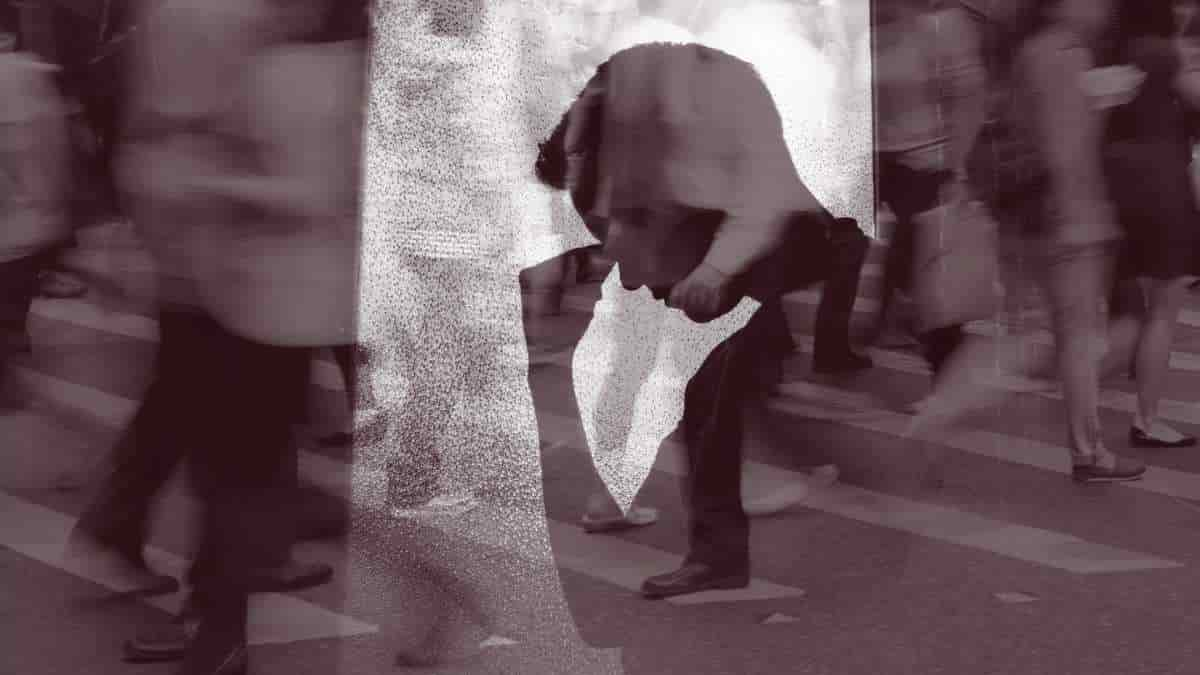Autistic people are up to four times more likely to experience loneliness than non-autistic people.
Despite enduring stereotypes that autistic people lack the desire for meaningful social connections, new research from my colleagues and I unveils the profound distress they experience due to loneliness. It also shows the unexpected role that differences in the ways individuals receive and interpret different stimuli through their senses – their “sensory processing” – may play in this phenomenon.
We combined two complementary studies that investigated autistic and non-autistic people’s experiences of loneliness, using different methods.
In the first study, autistic and non-autistic participants completed questionnaires measuring loneliness, anxiety, depression and sensory differences. We felt that the usual standardised loneliness questionnaires do not fully capture the important distinction between chosen solitude and distress caused by loneliness.
To address this, we added the additional question “How much does this upset you?” to each factor on the questionnaire to assess the level of distress caused by loneliness. Statistical analysis revealed how these factors related to each other and differed between the two groups.
In the second study, autistic participants discussed their experiences of loneliness in short, recorded conversations. We then identified common themes.
Sensory Differences and Distress
The results from the first study demonstrated a direct link between sensory processing differences and increased loneliness and poorer mental health in both autistic and non-autistic adults.
This association was particularly pronounced among autistic participants due to the differences in sensory processing and how they experience the environment around them. This was surprising, as the link between sensory processing differences and loneliness hasn’t been made before.
What’s more, autistic adults reported experiencing not only greater levels of loneliness but also more intense distress associated with it. This suggests that autistic individuals suffer more acutely from loneliness. This is on top of being more likely to experience it in the first place.
In the second study, autistic participants spoke about the intense pain of feeling lonely and socially isolated, while also needing to retreat into solitude to recover from over-stimulation. They expressed a deep desire for meaningful relationships with other people.
But they also described the barriers they faced in achieving this. These obstacles included difficulty connecting with non-autistic people, finding friends with shared interests, and feeling misunderstood and unaccepted by society.
One autistic participant described the difficulties she had faced in making friends as an adult:
“I’m trying to reach out, I’m trying to find my people, but it all still feels a bit hopeless.”
Many autistic participants also described feeling overwhelmed in high-intensity social situations, such as being in large groups, around unfamiliar people, or in busy office environments. They needed time alone to recover afterwards.
However, they had a more positive experience of this type of chosen solitude compared with being forced to be alone. Additionally, having more access to quieter environments with less stimulation could reduce the amount of recovery time needed.
Societal and Environmental Barriers
In addition to the emotional distress of loneliness, many autistic people also cited practical barriers to social connection. These included financial constraints, a lack of affordable and accessible community spaces, and the difficulty of navigating busy and noisy urban environments.
Autistic people may be at heightened risk of financial hardship during the cost-of-living crisis, as they often face barriers to employment and benefits. They are also more likely to experience sensory overload, as they process sensory information differently.
For example, one autistic woman in her sixties described how she could see her aunt’s house from her living room window, but could not safely cross the busy road that separated them to visit her.
More Welcoming Environments
Our findings debunk the outdated stereotype that autistic people lack the motivation to form meaningful social connections. Instead, social environments often exclude people with higher levels of sensory differences. This can limit the opportunities for autistic people to socialise and form meaningful relationships.
Our research highlights the need to create more welcoming sensory environments to reduce these barriers. Small adjustments to lighting, acoustics, décor and wayfinding, among other sensory factors, can significantly reduce the burden on people with sensory processing differences and open up more social spaces to them.
Concerted efforts from society as a whole – including town planners, employers, educators and owners of public social spaces – are needed to create spaces that consider the sensory needs of all neurotypes.
Reference:
- Lisa Quadt, Gemma Williams, James Mulcahy, Dennis E.O. Larsson, Marta Silva, Andrew J. Arnold, Hugo D. Critchley, and Sarah N. Garfinkel. “I’m Trying to Reach Out, I’m Trying to Find My People”: A Mixed-Methods Investigation of the Link Between Sensory Differences, Loneliness, and Mental Health in Autistic and Nonautistic Adults. Autism in Adulthood, doi: 10.1089/aut.2022.0062
Author: Gemma L. Williams, Research Officer in Public Health, Swansea University. This article is republished from The Conversation under a Creative Commons license.
![]()
